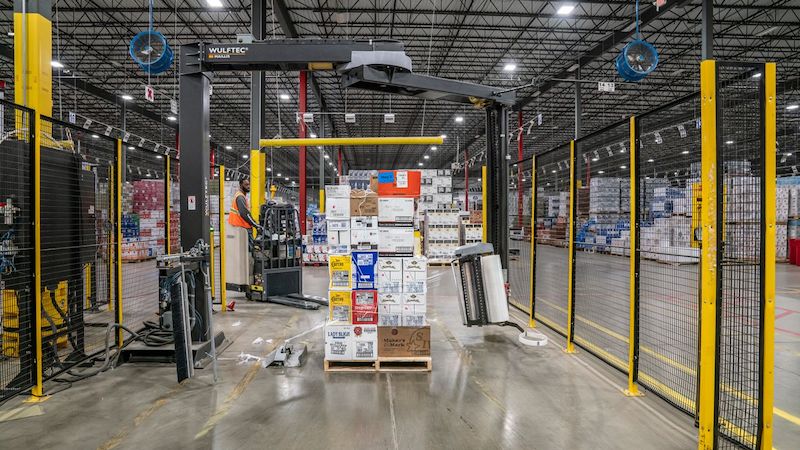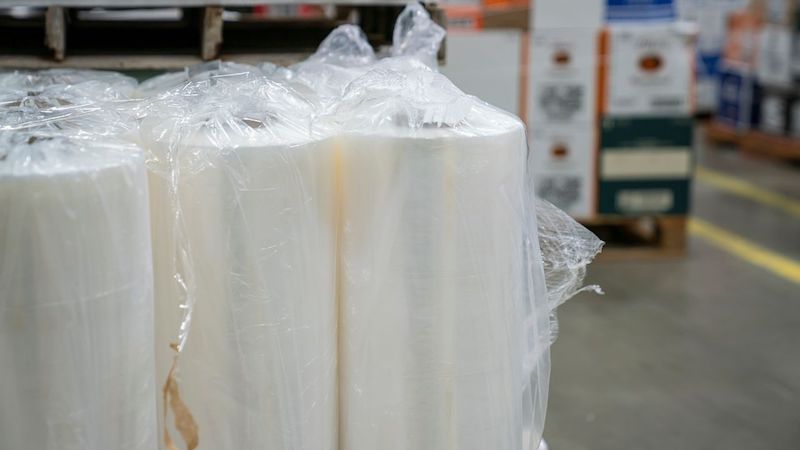Grow your business with the Discover newsletter
Logistics advice & insights straight to your inbox
Subscribe now
Proper shipping preparation is essential for successful delivery of goods to destinations around the world. Knowing the right packaging material and how to package your products can mean the difference between a damaged or delayed item and one that’s safely and securely shipped on time. All businesses, large or small, need reliable transportation solutions that guarantee their products will arrive safely in perfect condition at their destination. Fortunately, by taking some simple steps, you can not only make sure your shipment succeeds but also save money in the process. This guide will cover packaging material usage that is safe for shipping, so businesses and individuals looking to ship packages have the tools they need to ensure successful delivery.
Quality packaging is essential for businesses seeking to make a lasting impression on their customers. In addition to protecting products from the possibility of being damaged during transit, packaging promotes a sense of trust among customers that reassures them about the quality and reliability of the product. This in turn helps reduce the need for costly replacements and enhances customer satisfaction, paving the way for a steady relationship between you and your buyers. A package that is securely sealed displays attention to detail as well as quality control; factors which are quintessential if a business seeks to nurture and retain its customers. Therefore, choosing suitable packaging materials plays an integral role in aiding businesses to reach success.
The external materials used in packing make up the outer packaging used for shipping products and are also essential for protecting the items in transit. These are some of the common external materials that are frequently used to keep packages safe while they’re on the move:
Corrugated cardboard boxes are sturdy and dependable. A significant reason for their appeal lies in their multiple sizes and layers that can accommodate a variety of products.

Stretch films are materials that companies use to wrap around products that come in multiples, like water bottles, juice cartons, and tissue rolls. These external packing materials help companies keep their products from moving around or falling over during shipping and to make sure their products arrive safely at their destination.

Shrink film is a packing material which offers additional protection for products such as board games, perfumes and electronic items. It stretches around the object and then shrinks under the application of heat, thus creating a tight wrapping. If you want to protect small items or keep them together in a bundle, shrink film will work better than stretch film. It is also commonly used to cover food items like cheese or meat. Businesses can even opt for custom-printed shrink films with their logo or other details to add brand recognition.
Polyethylene bags and bubble wrap are two of the most common internal materials used during packaging processes. The internal materials protect your products from shock or vibration while on the move. Since products may shift around while in transit, these materials provide ample cushioning against the walls of the box the products are placed in.
Packaging filling materials provide further cushioning on top of the aforementioned internal materials. These fillers ensure minimal movement of products when shipping them in boxes. There are a variety of choices too that help meet specific filling material needs. These include packing peanuts, styrofoam inserts, corrugated boards, cardboard inserts, crumpled paper and shredded paper void fill. Additionally, less common filling materials such as Expanded Polystyrene Foam (EPS), polyethylene foam sheeting, encapsulated air plastic sheeting, and kraft paper can be used depending on the nature of the item needing to be shipped.
Choosing packaging materials for shipment preparation is an important factor when it comes to keeping your products safe as they travel from your warehouse to the customer. Besides taking into account the product, the packaging material should be selected carefully based on these considerations:
Durability is key to safe shipping as it prevents any damage while in transit. It is important to choose packaging materials that are durable enough to protect products against any external force or environmental hazards they may experience during shipment.
For perishable food items, an insulated styrofoam container can ensure the freshness of the product, and adding a watertight plastic liner will prevent any thawing or melting.
Cost is also something to consider; packaging material should not be so expensive that it gets transferred into a higher price for the customer. Finding a packaging material that is widely available and cost-effective is ideal as it ensures that both parties benefit from its purchase.
User-friendly product packaging should always be taken into consideration when selecting packaging materials for products. The packaging process should be fast and efficient, otherwise you may incur increased costs. The easier it is to use, the more cost-effective it will be for any business. This also extends to the customer. If the packaging is difficult to open or remove, or damages the item in the unboxing process, then it may negatively impact their experience.
By choosing packaging materials that promote recyclability, you are actively driving sustainable business operations and doing your part in reducing your carbon footprint. These small changes can help make a big difference in your customer satisfaction and environmental impact.
Smaller objects are more likely to get damaged if they are not packed with fillers or if you don't use the right size of shipping box. An online shipping box calculator can help you figure out what size you need. Once you have packed your items, make sure the box is sealed with duct tape. You can also put the shipping label on the package so your courier team knows what is inside and will handle your shipment appropriately.
When you ship large objects, you need to make sure the box is strong enough to hold the weight of the object. If the package is not strong enough with just one box, you can wrap it in shrink film and then put it in a new box. When pasting the labels, it should be placed on the larger outer box. If the object can be taken apart, it is safer to put the components in individual boxes before shipping.
It is safe to ship fragile goods as long as you take extra precautions. Find a secure and resilient mailing box that's fit for the purpose of packaging fragile items. Wrap them carefully in two to three layers of bubble wrap, while ensuring you don't use too much tape as this may cause bubbles to burst which will reduce their ability to protect your item. Once placed inside the box, use eco-friendly filling materials such as recycled packing paper or biodegradable plantable paper shreds to provide cushioning and improve customer perception positively towards your brand. Seal your package with heavy-duty duct tape and affix 'Fragile' stickers across all sides of the package so handlers know what due care should be taken when handing over product deliveries.
Oddly-shaped objects often require more than your typical run-off-the-mill shipping solution. From furniture to car parts, sports gear and beyond, special consideration must be taken for wrapping and packaging these unique items before they can hit the road. Shrink film is a great way to protect larger pieces like sofas or armchairs while internal materials are ideal solutions for smaller goods as they offer an extra layer of protection against damage in transit.

Packaging your products correctly is essential to ensuring safe delivery. Customers will also appreciate the care that went into packing their purchase, which could result in more sales and positive reviews for your business. DHL Express Indonesia offers a variety of local as well as international shipping services and has a team of logistics experts who can assist you with product packaging that will make your business stand out from the competition. Open a DHL Express business account today to get started on shipping your products safely and efficiently.